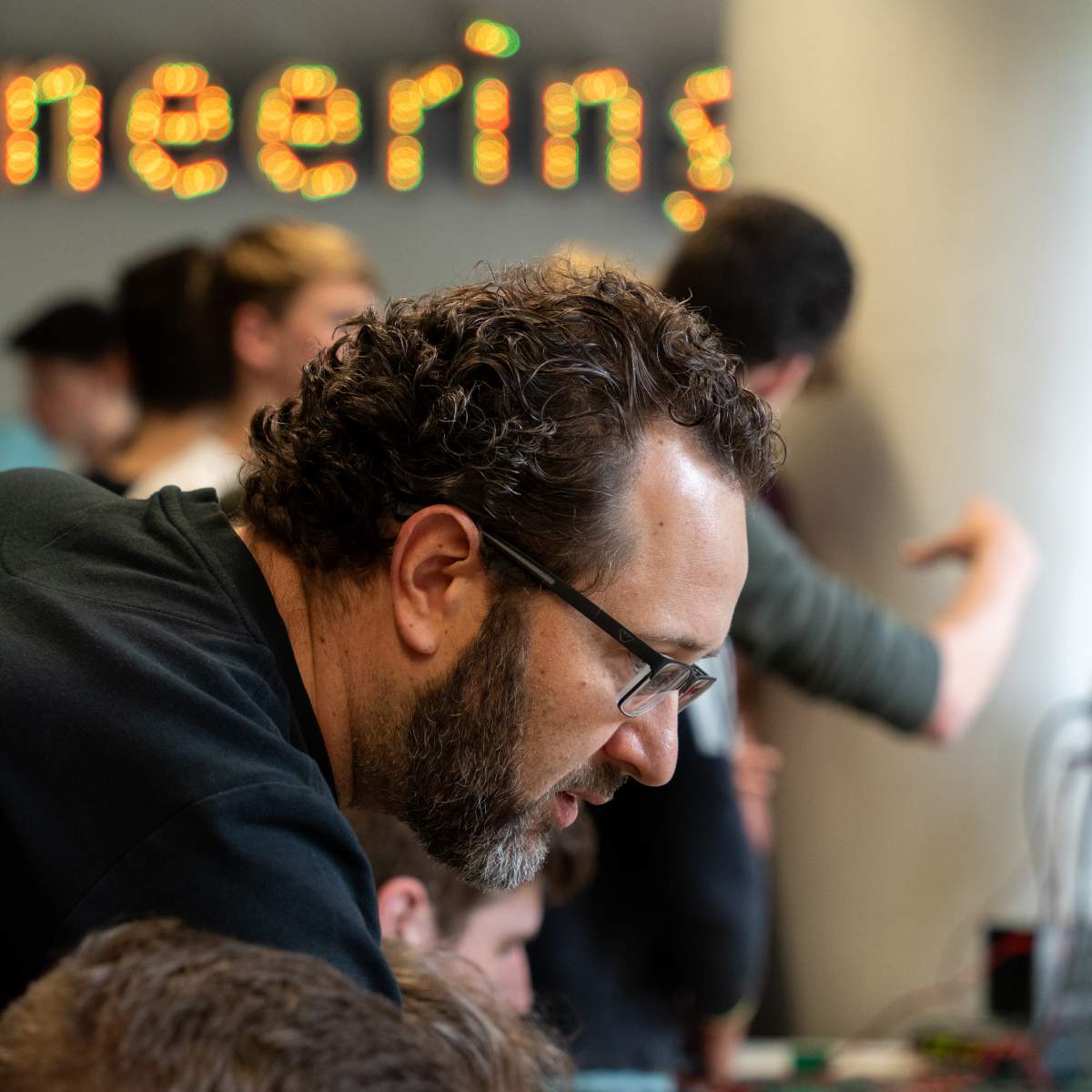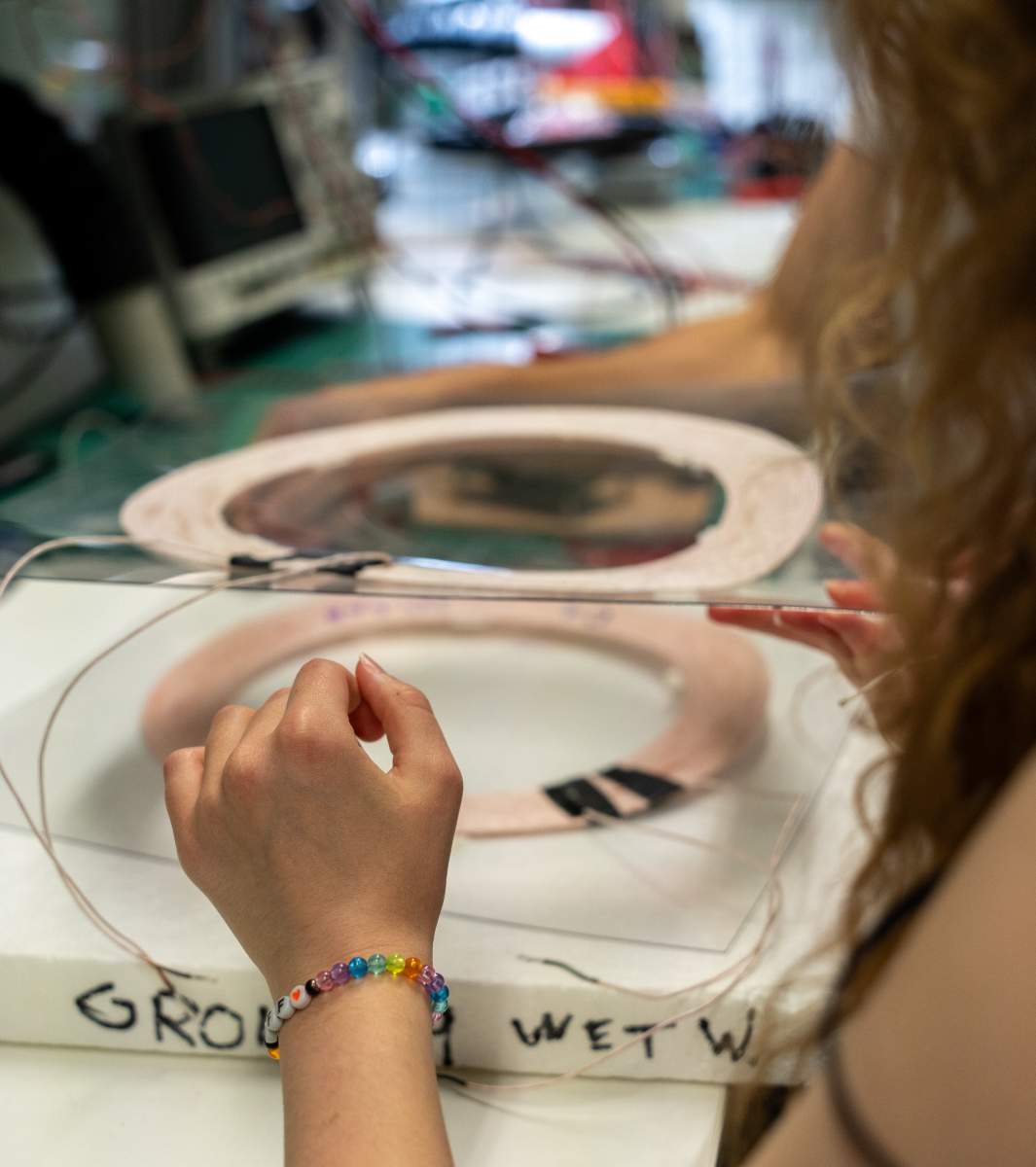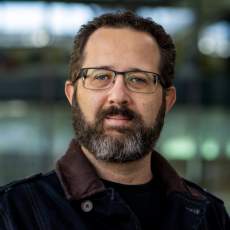What is the difference between Design-Based Learning (DBL) and Challenge-Based Learning (CBL), and how to transition between the two in your course? Gabriel Tibola, a University Lecturer at Electrical Engineering department, has been navigating this shift since 2020. In a recent interview, Gabriel shared his journey, challenges, and insights on transforming his course Wireless Energy Transfer (5XWF0) into a more open-ended and real-life experience for students, and for himself.
Jump to read more in detail how Gabriel structures the course on the TU/e practices page.
Gabriel’s motivation
With this simple modification, Gabriel introduced open-ended scenarios within a defined framework and created a connection to real-life context without changing the curriculum's main subject. Gabriel added that “instead of telling them exactly what and how to design, I now pose a more relevant question: What real-life problems can this wireless energy transfer solve? I give some ideas, but they come up with the challenges and later solutions themselves—and their creativity always surprises me.”
Empowering students to self-direct
Allowing the students to co-define their own challenge for the design of the wireless energy transfer system and a less pre-defined design process allows students to take the lead in their own learning.
In the industry, professionals not only work in multidisciplinary teams but also, quite often, take different roles within those teams. To simulate that setting, Gabriel introduced “roles” for each team based on tasks or expertise the students want to perform or develop (e.g., project leader, power electronics, printed circuit boards, magnetics, microcontrollers, etc). These roles are not strictly fixed, and students are encouraged to move between them within their teams. What is also interesting is that students with similar roles across teams collaborate with each other—producing parts or learning from each other’s experiences. This fosters interdisciplinary collaboration skills.
“We no longer dictate the group dynamics,” said Gabriel. “Students divide themselves into subgroups based on what they want to learn. They set their own goals. This way, they’re in charge of their knowledge journey, which is a core element of CBL.”
Small but impactful changes also enhanced engagement. “For example, instead of assigning group names, I let students create their own. It’s a simple tweak, but it helps them take ownership.” Importantly, Gabriel enables ownership through experimentation and mentions that he sometimes allow students to fail and learn from it.
And the student evaluation speaks for itself. With high average evaluation scores, one student summarises the general direction in student feedback: “It was the first course where I really got to use all the theories I have learned about so far. Most exciting and interesting experiences I had working on a project!”.
Assessment and feedback
Gabriel’s approach to assessment balances group and individual performance, ensuring accountability while still fostering collaboration. Groups are assessed by their final demonstration and reports, while individual assessment includes peer reviews, collaboration reviews, and how individuals contributed to writing the final report.
“We have a midterm evaluation where groups get feedback—it’s not about the grade but improving their work. The final report and demonstration are key, but peer reviews play a big role in ensuring everyone collaborates.”
Recently, Gabriel emphasized the role of the tutors (Teacher Assistants) in monitoring group dynamics. “They act as my eyes, spotting individuals who aren’t pulling their weight. It helps us address issues early and avoid free-riding.”
It is not without challenges
Managing a growing course with over 160 students has been another hurdle.
Having said that, the students are encouraged to consult with experts and outside stakeholders throughout their challenge identification and solution design and development.
Reflections and advice
Despite his progress, Gabriel remains humble about his work. “Even now, I don’t consider my course a full-fledged CBL. I like to call it CBL 0.5. But I’m learning every year, and that’s what matters.”
For educators considering a similar shift, Gabriel offered some advice: “First, learn what CBL really is and be open-minded. Don’t expect it to happen overnight. Start small, pilot a course, and make gradual improvements. It’s a journey, but it’s worth it.”
Gabriel’s experience shows that while the path to CBL may be challenging, it leads to a more engaging and impactful learning experience—and not only for the student, but for a teacher as a co-learner in the process.
Based on an interview, conducted and processed in August 2024.


